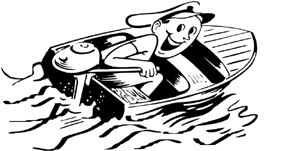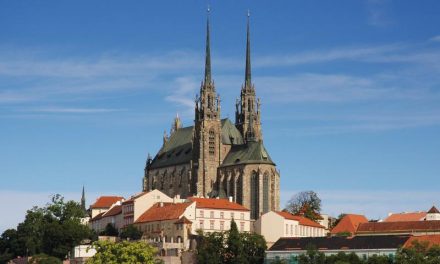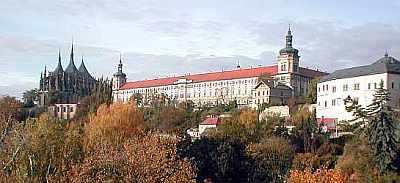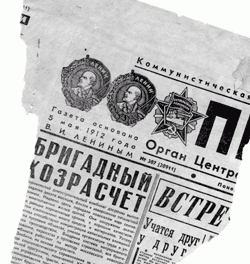City folk who gotta get away and want to immerse in a wind-down more relaxed culture could do worse than goin’ Southbound towards what was once with pride & affection termed the Great Moravian Empire…
Trains will take you and your bicycles down south practically every hour, and a worthwhile stop on the Czech/Moravian border brings you to the historic walled city of Jihlava. Half Czech & Half Moravian, architecture is varied, culture welcoming, and down in the river valley, you can get up close & personal with big cats & prehistoric survivors. The locally owned Jihlava tea room (just off the town square) is also quite infamous for its eclectic book offerings and useful “gifts” available in the storefront.
Having “done Jihlava”, continue cycling, hitchhiking, or riding that train, and get off at the main station in Brno. After cooling off with good local beer (read: Cerna Hora, NOT the Austrian owned Starebrno), find your way to the nearest college dorm (kolej) for an overnight bed and shower that won’t break your budget.
As in Jihlava, Brno’s most laid-back areas are along the city’s two rivers. Walk along the Svratka near Komin and you will see a 55 year old survivor of one of the hundreds of efficient “micro-hydro” energy generating stations built back in the thirties during the final days of the first Czechoslovak republic.
Continue “upriver” for a few kilometres and you reach Brno’s infamous “prehrada”, which the German occupiers intended “blow up” until locals valiently organized to thwart their attempts. 53 years later, the industrial “occupiers” of the land upstream also pose a very real threat to anyone who might wish to cool off in the dammed river waters.
People with sensitive skin or allergies to waterborne impurities must enter at their own risk, cause the lake today is a toxic cumulation of everything dumped in the Svratka’s upstream waters. And that includes pit mine uranium tailings from the Loucka river, which feeds into the Svratka just n/w of Tisnov.
Still feel like skinnydipping? There are two fine “nudaplazs” on Brno’s prehrada, one on the east side near Osada, and one small area on the west side, just south of Rokle. Remember to leave your city trips behind – be considerate of non-smokers in the area when you are upwind from them, and remember to carry your trash (including cigarette butts) out with you to keep these special “natural” places looking as good as possible.
Women can be comfortable on either beach. Both are more relaxed in the morning, and people will help you immediately if you are harrassed by the occassonal “gawker”. Don’t be afraid to get close to someone nice if you are so inspired! And remember to check your body often and carefully for ticks that share this habitat! These creatures do have the potential to carry lyme disease, but if they are removed in time (save the tick to take to your doctor “just in case”), you should not have to deal with the telltail signs of infection (the red bull’s eye around the bite) and the subsequent regime of antibiotics.
Veverska Bityska at the northwest end of the prehrada can be accessed by foot, bicycle, car, bus, or boat. The electric powered ferries on Brno’s Lake will shuttle you from the main port (Pristaviste) to several stops along the way (including Osada, Rokle & Hrad Veveri (Squirrel Castle). This Gothic Fortress, dating back to the l3th Century, is surrounded by forests and looks inviting, but it’s only open for viewing three or four times a year. www.veveri.cz will tell you why and list the opening days in early September…
Once at Veverska Bityska, plan to visit the local bakery for excellent Walnut Bread, Sunflowerseed Bread, and sweet rolls (Lopacek). With a sufficient supply of whole grains, you are ready to take a side trip a few kilometres from the river to Sentice village.
Sentice can be accessed through a walk in the forest from Bityska or by bicycle, bus, or auto via Chudcice. And Sentice is only a couple of kilometres from the Cebin train station, which is halfway between Kurim and Tisnov. The reason you want to go to Sentice is to taste the original Kvasar l5% honeybeer! Accept no substitutes, There are other “Kvasars” on the market, but they are not l5% and not brewed in the family house of Jiri Jelinek.
Mr. Jelinek’s house, #13 Sentice Road, is “open for business” during regular working hours, Monday through Friday, and you can “takeaway” either a liter and a half or (with an appropriate deposit) a keg. If you just want to sample a glass of this golden unfiltered brew, visit Pan Maly’s hospoda (the only one in the village).
Like at the prehrada, leave your city trips behind and be considerate here, ’cause the local people are friendly and hope you are also. The terrace is alive in the summertime, and the indoors has open windows and/or a “smoke sucker” on the ceiling that is always working overtime. Pozor the opening hours: Monday thru Friday only from l700 to 2200, Saturday l700-2300, and Sunday ll00-1300, and 1700-2200. Pan Maly takes a break on Tuesday!
But if Tuesday evening is your only time in the area – and you don’t want to miss out on the Kvasar experience, you have the possible option of “finding” the original l5% Kvasar in Tisnov at NaKrcku pub (Sokolovna) or, with luck, in Kurim at U Mertu. UMertu has no terrace, though, and after a recent “refurbishing” not even their name on the building, so good luck “finding” this local hangout, which is just below the old church on the hill on the west side of town.
Once properly tanked with a few Kvasars under your belt, you will undoubtedly have the inspiration to head Southbound in a westerly direction to “Czech out” Moravia’s nuke villages, Dukovany & Temelin. Property values have curously plummeted here over recent years, so if you find your “dream home” in either of these quaint radioactive “company towns”, well, lucky you, it’s a buyer’s market! Pay no attention to the recent medical reports of increased illness in the area or to the man behind the curtain!
Another former company town (until the mines were closed) is Ivancice, just downriver from the Baroque library frescoes of the Namest nad Oslavou castle. The beauty of Ivancice lies in its relative state of neglect and poverty. Few tourists here, so the cukrarna prices are low, the quality high, and the working folks unpretentious .
The old Renaissance castle was used off and on during the last l0 years as a location for a Czech public television serial, and townspeople are now hoping that the castle will be recognized for its place in history, be properly restored, and even honored as a UNESCO site.
Perhaps, the real untold story here is the life/scene along the Jihlava river.
Once the lifeline of communications and trade before the days of trains and the infernal(sic) combustion engine, a slow cruise downstream takes you back in time to quieter days, where forests, vineyards, sustainable agriculture, and, of course, pub crawling played a critical role in lifestyles and local economies.
Every village has a story, and, in the case of Dolni Kounice, the Rosa Coeli monastery ruins and the abandoned, neglected state of the late Gothic castle make you wonder what went wrong…The “stary hrad”, decomposing before your eyes, has a rare, little known circular staircase which, if properly restored to the days of its former glory, could rival that of the “zamek” in Lednice.
From both its hills and its riverbanks, Dolni Kounice offers dramatic imagry of a rich past gone to seed during 50 years of Soviet neglect. Ask the old locals here about “micro-hydro” along the Jihlava and Oslava rivers, and they will paint a picture of futuristic energy self-sufficiency that was IN PLACE and ready to go on line until Hitler’s occupation of the country in the late 30’s.
It’s a tragic story of resources squandered. When you look at the outrageous environmental and economic costs of the controversial Temelin & Dukovany “Soviet style” nuclear fission reactors to the west and the proliferation of filthy coal-fired plants that co-opted the micro-hydro grid, it’s enough to drive anyone with half an education or consciousness to drink – and that is precisely what may save this area from complete economic collapse.
The fine Moravian wines of Dolni Kounice, Moravske Branice, and Nova Branice are largely understand and – in most parts of the Czech Republic – completely unknown. Like Ivancice, these villages are best “discovered” at a slow pace, taking time to follow the river and talk to locals, who might well share their stories with you over a glass or two of home grown fruit of the vine. It is all a “work in progress” to be discovered and be a part of, if you so desire…





